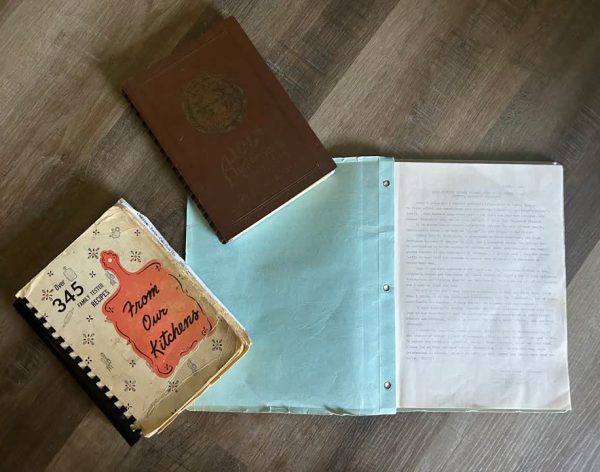Bookclub
A story inside a story inside a story: decoding “S.”
I have always been an annotator of books, though not in the Pinterest way with the highlighters, rainbow tabs and translucent sticky notes, although I do admire those who are — it’s an art form, if you ask me.
Rather, I’m a pen-and-ink kind of gal, a scribbler, a smiley face drawer, an underliner (sometimes a wavy underliner when I’m feeling particularly festive), an arrow drawer and an exclamation point exclaimer.
There’s even an obnoxious story highlight dedicated to my squiggles on my Instagram, full of my all-caps Dad penmanship bleeding across the pages.
So imagine my pure, eternal delight when I first opened “S.” by J.J. Abrams and Doug Dorst (what an unexpected pair they make).
“S.” is what one might call a “frame story,” or a story written within another story. For any Mary Shelley fans out there, the book “Frankenstein” is an exceptional example of this device.
But “S.” achieves this layering in a fascinating and absolutely cool and awesome and really smart way: through annotations.
The “cover” of “S.,” if you’d like to call it that, is more so a book sleeve that holds the physical book inside it, which is called “The Ship of Theseus,” written by a fictitious author dubbed V. M. Straka.
“The Ship of Theseus” is a mystery book that follows a man who has no memory. In the opening pages, he wanders through a city trying to orient himself to where and who he is. But the mystery doesn’t stop there.
The author, Straka, is nearly as intriguing as the books he writes. He was never seen and did all his publishing through semi-trusted acquaintances before his untimely — and premeditated? — death. Why all the shadows and creeping about? You’ll have to keep on reading to find out.
It still doesn’t stop there.
“The Ship of Theseus” is made out to be a library book, well loved and worn, that has been read and annotated by a graduate student, Eric, who is researching the ever-elusive Straka for his dissertation.
That’s until Jen, an English undergrad, finds the book in the library one day and responds, or writes back, to Eric. From that point on, a second story evolves — a back-and-forth dialogue occurring in the margins.
It turns out there is mystery there, too. Researching Straka appears to be more dangerous than it originally seemed as Eric has been cut off from the university and disowned by his supposed faculty advisor — Moody, a professor and competitor for Straka intel.
On every page, there is the “The Ship of Theseus” text to read, but also the notes written on the sides of the pages, and the other papers and postcards and photographs tucked within the pages, like a literary treasure chest.
“S.” is a masterpiece, in my opinion, a magnum opus in honor of literature, a love letter for analog, a reason to get excited about reading.
If you’re down for a mystery, a good mind puzzler, consider giving “S.” a try.
Schutte can be reached at [email protected].

Grace Schutte is a fourth-year creative writing and Spanish student. This is her fifth semester on staff, having previously served as a staff writer, Chief Copy Editor, a freelance writer, Currents Editor, and now as the OP/ED Editor. She is currently daydreaming about living softly. She is very content.











